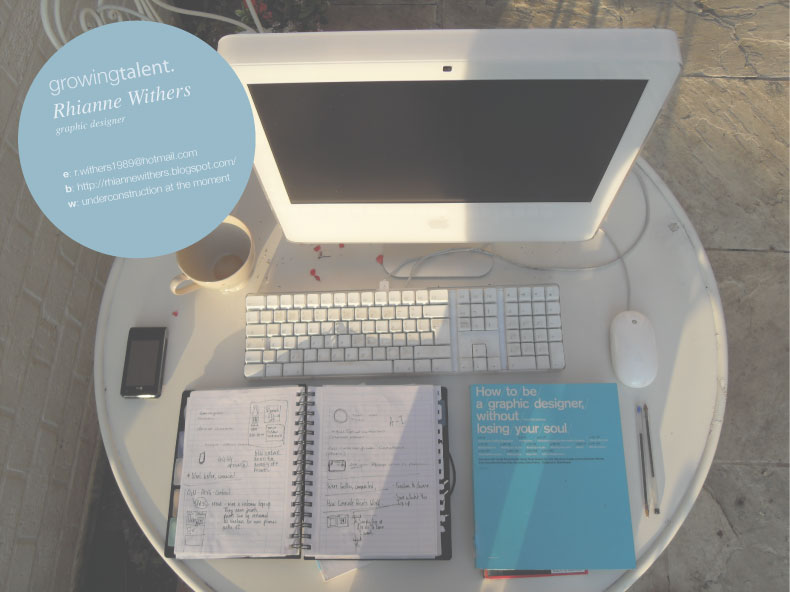By defining a distinctive graphic style to a diverse range of projects, GRAPHIC THOUGHT FACILITY has emerged as one of the UK’s most influential – and productive – graphic design teams. Founded in London in 1990 by Andy Stevens and Paul Neale, GTF now works for such clients as Habitat, Shakespeare's Globe Theatre and the Design Museum.
The work of Graphic Thought Facility is defined less by a distinctive visual language than the rigour with which the designers approach the process of developing and executing graphic projects. The defining characteristic of GTF’s finished work is its eclecticism. Drawing on a diverse range of typefaces – from robust use of Helvetica in the Digitopolis gallery at the Science Museum in London, to the curlicue lettering in marketing material for Habitat – printing techniques and materials, GTF reinvents its graphic style for each project.
Founded in London in 1990 by Paul Neale and Andy Stevens after they graduated in graphic design from the Royal College of Art GTF has since combined cultural projects – for Manchester Art Gallery, the Frieze Art Fair and Shakespeare’s Globe Theatre as well as the visual identity of the Design Museum – with commercial commissions from Habitat and the design of graphic-based products such as the MeBox storage system. Huw Morgan is now a partner of GTF alongside Neale and Stevens.
Visit GTF's website at graphicthoughtfacility.com
© Design Museum
Q. What were your early design influences? What drew you to graphic design?
Andy: Malcolm Garrett’s Simple Minds sleeves and TDK cassette packaging.
Huw: Printing. My mother had friends that were printer-makers - in the fine art sense - and I used to watch them avidly. They taught me about litho, we used stones and wax crayons instead of metal plates and films. I liked the process.
Paul: Probably the books and toys I had as a child.
Q. Do you feel that your education (design or otherwise) influenced the way you work now?
Andy: Leeds was very social and unpressured, I aspire to a working day that is like this! I found Derek Birdsall a big influence at the Royal College of Art.
Huw: In all honesty, probably not. It’s a crap cliché but I’ve learned more since leaving, although I’ve probably retained a methodical way of working that comes from learning chunks of exam revision verbatim.
Paul: Yes, it's the same pattern of “discuss, go-away-and-do-a-bit, then come back and discuss” that began in my A-level art group. Our art teacher, Mrs Savage didn’t follow a particular curriculum.
Q. Where did you meet and how did you start working together?
Andy: At the RCA from 1988 to 1990, I shared a studio with Paul and other founder member Nigel after Johnny Barnbrook moved out.
Huw: Paul was my tutor at Central Saint Martins (art school) and three years later I worked with Paul and Andy on an exhibition at the RCA.
Q. What were your earliest design commissions?
Andy: A logo for my best friend - a mobile hairdresser (stolen from an ERCO ad in Blueprint magazine) and local stuff in Leeds, then friends of friends’ shops and bands.
Paul: At school we found a group of break-dancers in an underground car park in Derby. We asked them to come into our school and do a gig. I designed the flyer - heavily influenced by the constructed typefaces in The Face, complete with halftone dots rendered in gouache.
Q. How would you characterise the perfect relationship between designer and client?
Andy: Mutual respect, un-bullshity.
Huw: One that trusts your opinion and appreciates that you are doing everything in your ability to give them the best job you can.
Paul: Relaxed, trusting and with no hidden agendas.
Q. What, if anything, do you consider to be your trademark?
Andy: GTF’s trademark would be the thoughtful consideration of purpose and production.
Huw: It would be good to think that it wasn’t as mannered as a trademark, but in reality, although you might try and avoid it, there are always going to be comfortable places that you go back to.
Paul: Unavoidable as it is, I hate the idea of having a trademark. I think our’s are self-evident.
Q. What would be your ideal job?
Andy: A Camper van concept for the new Volkswagen microbus.
Huw: Ever - in graphic design?
Paul: Probably something geeky.
Q. What is your favourite piece of your own work?
Andy: The Royal College of Art prospectus
Huw: Plenty of things still look good. A selection to follow, though I can’t necessarily take credit for them:
* a Jo Gordon Christmas card that was die-stamped through the envelope to make the card
* the Macbeth poster that Paul and Andy did before I knew them
* Oki Nami neon sign
* the Science Museum Digitopolis EL's
* The Globe publicity from 2003 with Nigel Shafran's photography
* various Habitat press releases
* Design Museum logo
Paul: No outright favourite, but the Habitat SS02 press release is a good one because most of the studio was involved in some way: model-making, photography, font-mongering etc.
Q. What is your favourite piece of graphic design in general?
Andy: Nothing stands out, I won’t try and force it.
Huw: Today it’s the General Electric logo and the deli just off the Ramblas in Barcelona with the full-bleed-product window.
Paul: That’s like asking: ‘What’s your favourite song?’ Today, it could be
Hipgnosis/George Hardie’s 10cc - How Dare You! record sleeve.
Friday, 6 June 2008
Subscribe to:
Post Comments (Atom)

No comments:
Post a Comment